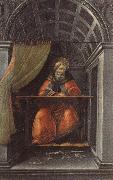Wholesale Oil Painting No Minimum |
|||||||||||
|
|
|||||||||||

|
|||||||||||
|
|
|
||||||||
Sandro BotticelliItalian Early Renaissance Painter, 1445-1510 Italian painter and draughtsman. In his lifetime he was one of the most esteemed painters in Italy, enjoying the patronage of the leading families of Florence, in particular the Medici and their banking clients. He was summoned to take part in the decoration of the Sistine Chapel in Rome, was highly commended by diplomatic agents to Ludovico Sforza in Milan and Isabella d Este in Mantua and also received enthusiastic praise from the famous mathematician Luca Pacioli and the humanist poet Ugolino Verino. By the time of his death, however, Botticelli s reputation was already waning. He was overshadowed first by the advent of what Vasari called the maniera devota, a new style by Perugino, Francesco Francia and the young Raphael, whose new and humanly affective sentiment, infused atmospheric effects and sweet colourism took Italy by storm; he was then eclipsed with the establishment immediately afterwards of the High Renaissance style, which Vasari called the modern manner, in the paintings of Michelangelo and the mature works of Raphael in the Vatican. From that time his name virtually disappeared until the reassessment of his reputation that gathered momentum in the 1890s |
||||||||
|
|
||||||||
St.Augustine in His Study
St.Augustine in His Study Painting ID:: 29754 |
mk67
Tempera on panel
16 1/8x10 5/8in
Uffizi,Gallery
mk67 Tempera on panel 16 1/8x10 5/8in Uffizi,Gallery |
|||||||
|
|
||||||||
|
Vittore Carpaccio Italian 1455-1526 Vittore Carpaccio Locations His name is associated with the cycles of lively and festive narrative paintings that he executed for several of the Venetian scuole, or devotional confraternities. He also seems to have enjoyed a considerable reputation as a portrait painter. While evidently owing much in both these fields to his older contemporaries, Gentile and Giovanni Bellini, Carpaccio quickly evolved a readily recognizable style of his own which is marked by a taste for decorative splendour and picturesque anecdote. His altarpieces and smaller devotional works are generally less successful, particularly after about 1510, when he seems to have suffered a crisis of confidence in the face of the radical innovations of younger artists such as Giorgione and Titian. St.Augustine in his study mk157 1501-03 Oil on canvas 141x210cm |
||||||||
|
|
||||||||
|
Prev Next
|
||||||||
|
|
||||||||
|
Related Paintings to Vittore Carpaccio :. |
||||||||
|
|
||||||||
|
CONTACT US |

